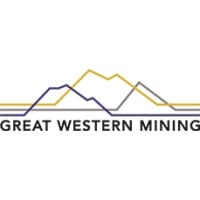A heavy metal forged in the furnaces of industry yet seldom discussed in boardrooms is quietly underpinning the technological ambitions of nations.
Beneath the surface of familiar metal stocks lies a substance whose silent resilience has become indispensable across sectors from aerospace to electronics. Its high melting point and unmatched hardness have turned it into a critical ingredient for cutting-edge applications, even as supply chains strain under geopolitical tensions. Investors inclined to peer beyond the usual commodity suspects may find that this elemental titan offers a rare glimpse into both risk and reward at the heart of global infrastructure.
Tungsten’s appeal begins with its extraordinary physical properties. Of all metals, it boasts the highest melting point, hovering above 3,400 °C, and a density rivalling that of gold. These characteristics have historically made it the filament of choice in lighting and cathode ray tubes, yet its significance has evolved far beyond incandescent bulbs. Today, tungsten’s capacity to withstand extreme heat and wear positions it as an essential component in the manufacture of high-speed cutting tools, drilling equipment for oil and gas extraction and even armour-piercing ammunition. Its sheer durability reduces downtime and extends the lifespan of industrial machinery, delivering an operational edge that directly influences balance-sheet efficiency.
In the realm of advanced manufacturing, tungsten alloys play a pivotal role. When alloyed with cobalt or nickel, tungsten carbide emerges as one of the hardest substances available, enabling precision machining at tolerances measured in microns. This precision is increasingly demanded by sectors such as aerospace, where engine components must endure jet-engine temperatures and corrosive environments, and by the medical device industry, which relies on tiny, high-strength parts for minimally invasive surgical tools. The ability to machine complex geometries with consistency translates into lower scrap rates and higher yields, factors that can transform capital expenditure into sustained revenue streams.
Beyond mechanical applications, tungsten’s conductivity and thermal stability have made it indispensable in electronics. As semiconductors shrink and power densities climb, materials that can manage heat without compromising performance are at a premium. Tungsten interconnects in microchips help channel heat away from critical nodes, preserving chip reliability under increasingly demanding workloads. Likewise, in the burgeoning electric vehicle market, tungsten’s thermal management properties support both battery packaging and motor components, ensuring longevity and safety in high-voltage environments.
Yet the supply backdrop for tungsten introduces a layer of complexity. Global production is heavily concentrated in a handful of jurisdictions, with China accounting for a substantial majority of mined output. This geographical skew exposes end users to policy shifts and export quotas, elevating supply risk even as demand accelerates. Recent strategic stockpiling initiatives by national governments and growing interest in domestic resource development hint at rising tensions over access to this critical metal. For investors, understanding the provenance of tungsten supplies and the evolving regulatory landscape is as important as assessing demand drivers.
The market for tungsten has historically traded in the shadow of better-known base metals, but the tightening of ore supplies and the dearth of new mining projects have begun to put upward pressure on prices. Exploration in frontier jurisdictions, from Central Europe to North America, is slowly gathering pace, though project lead times are measured in years. In the interim, refiners and specialty metal producers have turned to recycling tungsten from industrial scrap, creating a secondary supply chain that mitigates some geopolitical risks while raising questions about feedstock availability and quality. This circular dimension offers a fresh angle for investors to consider, particularly those interested in ESG-aligned strategies that emphasise resource efficiency.
For those mapping long-term industrial cycles, tungsten’s cross-sector reach, from defence and energy to healthcare and electronics, creates a uniquely diversified demand profile. Unlike metals tied predominantly to construction or automotive markets, tungsten’s footprint spans multiple growth vectors, providing a measure of resilience against sector-specific downturns. At the same time, any disruption in supply can ripple across industries, underscoring the material’s strategic importance and the potential leverage held by producers and refiners.
Great Western Mining Corporation Plc (LON:GWMO) is a mineral exploration and development company, incorporated in Ireland with operations in the USA.










































